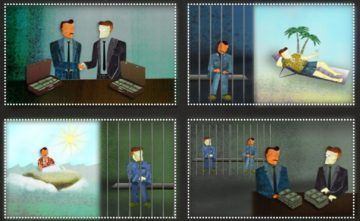S. M. Amadae in Public Books:
 When and why do people cooperate or compete? Researchers at the RAND Corporation studied this question in the 1950s using what was then a new decision science called game theory. Game theory was developed during World War II by the Hungarian mathematical physicist and leading Manhattan Project contributor John von Neumann and the Austrian economist Oskar Morgenstern. It was immediately used by operations researchers for military logistics, and to develop a science of military decision making. By the late 1950s it was applied to nuclear deterrence, with the future Nobel laureate economist Thomas Schelling publishing The Strategy of Conflict in 1960.
When and why do people cooperate or compete? Researchers at the RAND Corporation studied this question in the 1950s using what was then a new decision science called game theory. Game theory was developed during World War II by the Hungarian mathematical physicist and leading Manhattan Project contributor John von Neumann and the Austrian economist Oskar Morgenstern. It was immediately used by operations researchers for military logistics, and to develop a science of military decision making. By the late 1950s it was applied to nuclear deterrence, with the future Nobel laureate economist Thomas Schelling publishing The Strategy of Conflict in 1960.
RAND Corporation researchers developed one particular game called the Prisoner’s Dilemma. In this scenario, two coconspirators have been jailed by a clever district attorney who offers them each a choice of confessing their crime or remaining silent. If both remain silent, they will both go free. If both confess, they will both receive five-year sentences. However, if one confesses and the other stays silent, then the confessor will go free and receive a handsome reward while the other receives a 10-year sentence. For those not schooled in strategic logic, it may seem obvious that both should stay silent. And yet, according to game theory, it is rational for each to confess. Hence both end up with a worse outcome than if the two had cooperated.
RAND researchers were fascinated with the Prisoner’s Dilemma game, which social scientists would subsequently apply to everything from nuclear deterrence and international-relations anarchy to the social contract, free riding, and public-goods distribution.
More here.
